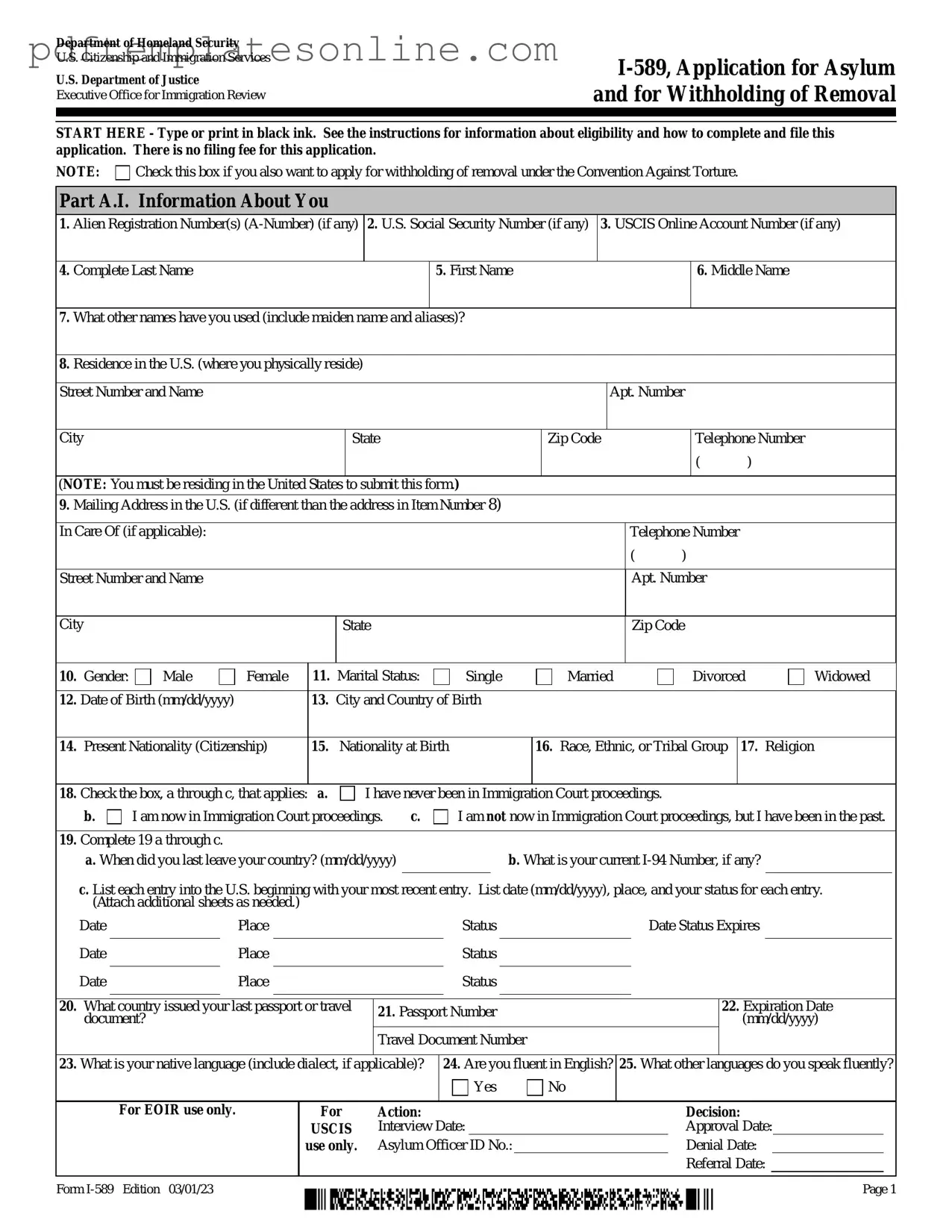Completing the USCIS I-589 form can be a daunting task, and many applicants make common mistakes that can delay their asylum applications. One of the most frequent errors is failing to provide complete and accurate personal information. Each section of the form requires specific details, such as name, address, and date of birth. Omitting any of this information can lead to processing delays or even a denial of the application.
Another common mistake is not answering all questions thoroughly. Each question is designed to gather essential information about the applicant's background and reasons for seeking asylum. Leaving questions blank or providing vague answers can raise red flags. It's crucial to read each question carefully and respond in detail.
In addition to providing incomplete information, many applicants struggle with the narrative section of the form. This section allows individuals to explain their fear of persecution. Failing to include specific examples or details about past experiences can weaken the application. The more compelling and detailed the narrative, the stronger the case for asylum.
Moreover, applicants often neglect to sign and date the form. A signature is not just a formality; it confirms that the information provided is true and complete to the best of the applicant's knowledge. Without a signature, the application may be considered invalid, resulting in unnecessary delays.
Another mistake involves the submission of supporting documents. Applicants sometimes forget to include essential evidence, such as identification, proof of persecution, or any other relevant documentation. These documents play a critical role in supporting the claims made in the application, and their absence can significantly hinder the process.
Many individuals also overlook the importance of keeping copies of their submitted forms and documents. Having a record of what was sent can be invaluable in case of follow-up questions or requests for additional information. Without these copies, applicants may find themselves scrambling to recall what they submitted.
Additionally, some applicants fail to follow the specific submission guidelines outlined by USCIS. This includes using the correct mailing address and ensuring that the form is submitted within the designated timeframe. Ignoring these guidelines can result in delays or even a rejection of the application.
Another frequent oversight is not seeking legal advice or assistance when needed. Navigating the asylum process can be complex, and having a knowledgeable advocate can help avoid common pitfalls. Many applicants attempt to go it alone, which can lead to mistakes that could have been easily avoided.
Finally, applicants sometimes underestimate the importance of staying informed about changes in immigration laws and procedures. Regulations can evolve, and being aware of these changes can help ensure that the application is compliant with current requirements. Keeping up with the latest information is essential for a successful application process.
